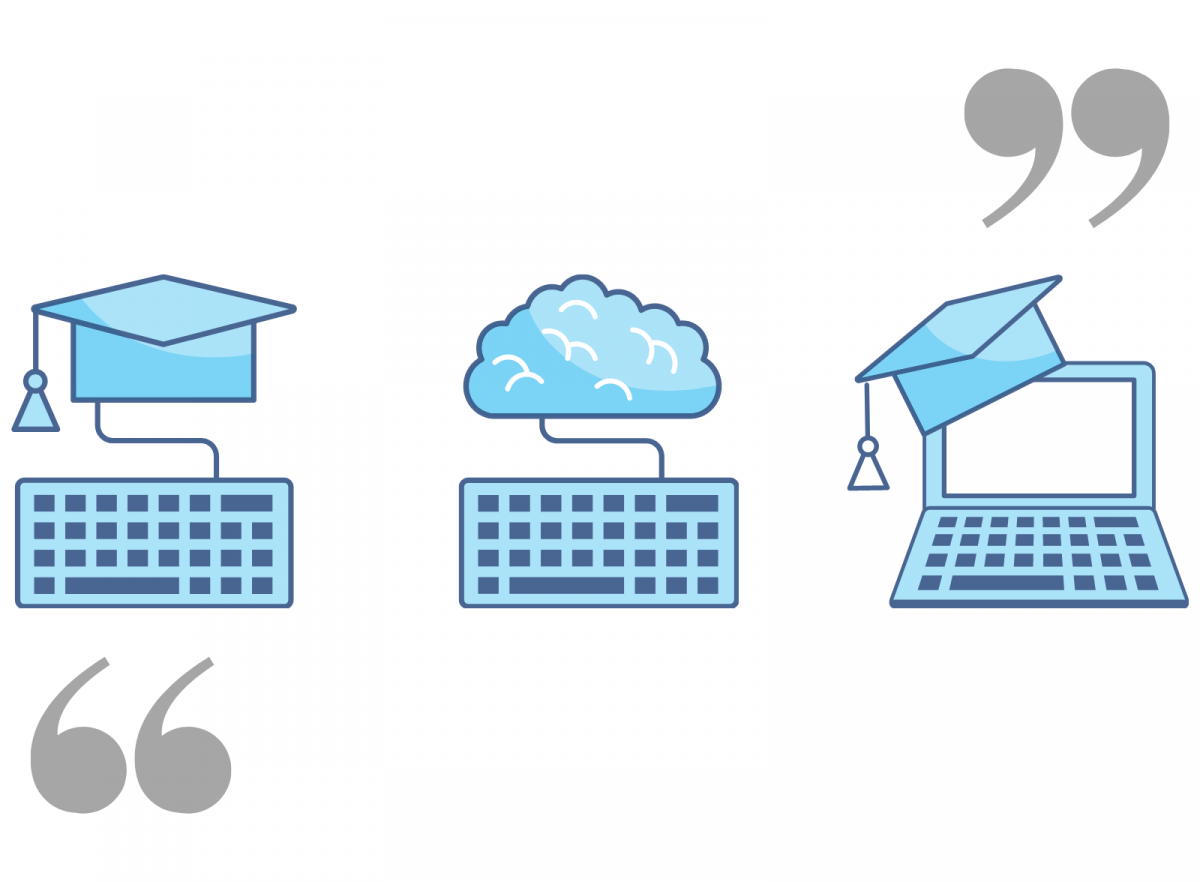During their career, every teacher will face cases of plagiarism. Some resort to punishment, while others opt for leniency. The importance of the assignment greatly influences the approach adopted. When possible, the teacher can turn an alarming situation into a teaching opportunity. How can this be done? This is a time to identify the possible causes of plagiarism and the reasons that push students to resort to this kind of misconduct. This understanding leads to awareness and enables adjustment of teaching methods in order to avoid recurrences.
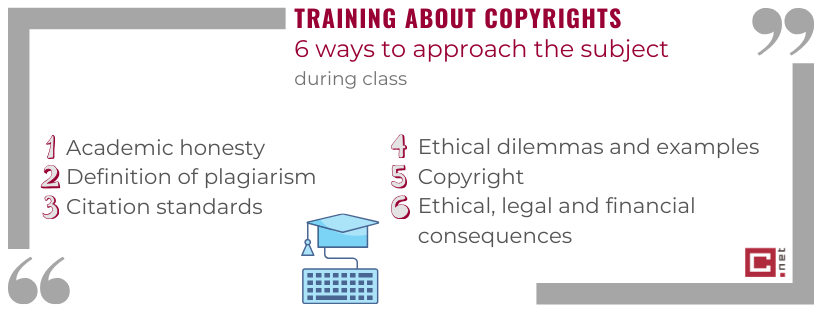
Researcher Brigitte Simonnot discusses the prevalence of plagiarism at universities in her publication University plagiarism, only a question of ethics? Firstly, she highlights how students have difficulty distinguishing between reproducing content and taking ownership of it. Consequently, she invites us to turn this situation into a real educational opportunity. Indeed, it is important for the student to understand what plagiarism is and its consequences. This requires training students, even if a case of plagiarism has been confirmed. There are several ways to approach the subject:
- The teacher can use a case of plagiarism as an opportunity to reiterate the value of academic honesty rather than punishment.
- It is also an opportunity to teach the student the definition of plagiarism, its boundaries and its limits.
- In the same way, citation standards should be taught starting in secondary and high school, so that it can become obvious and easy to apply these standards.
- To further the point, the teacher can then work with the student on ethical dilemmas and concrete examples to clarify what is and is not allowed, as well as the associated risks and punishments.
- This opportunity should be used to educate about copyrights, the reliability of Internet sources and royalty-free images.
- Finally, the teacher can explain the ethical, legal and financial consequences from copying and pasting in academic and professional contexts. The regulatory framework for applying punishments must be known by all in order to be respected. For example, students can sign an anti-plagiarism document at the beginning of the year or an honour code (you will find guides and examples in your Compilatio Magister interface).
Practice: writing workshop to solidify best practices
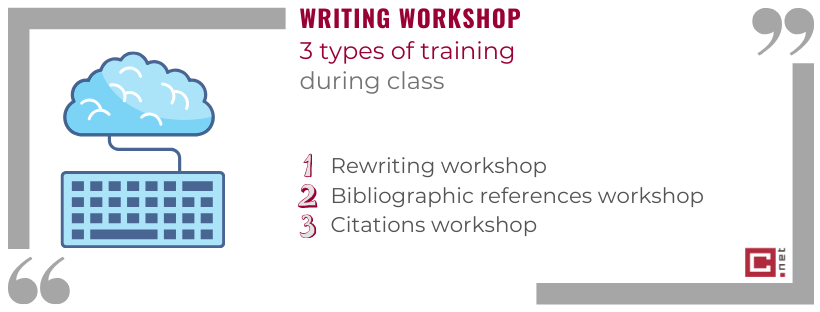
In order to combine theory with practice, teachers can carry out workshops to support learning in an educational way:
- "You can guide students through rewriting exercises to teach them how to paraphrase a small portion of text, to convey an idea in their own words, without forgetting to cite the document being referenced. This type of exercise allows students to search for synonyms, change sentence structures, play with words, and has the added benefit of showing that they understand the author's meaning."
- "Last but not least, students will need to learn how to write bibliographic references for the documents they have consulted, whether they be books, periodical articles or websites, both systematically and while respecting standards in use." Source: Savoirs CDI website of the Canopée Network, in the article "How to combat plagiarism at school" by Dora Dussurgey
- Citation methods are too rarely taught. However, to respect copyrights, it is crucial to know how to cite properly. Teachers are encouraged to lead a citations workshop where the 4 most commonly used citation standards are explored and applied.
Pedagogy at the heart of plagiarism awareness
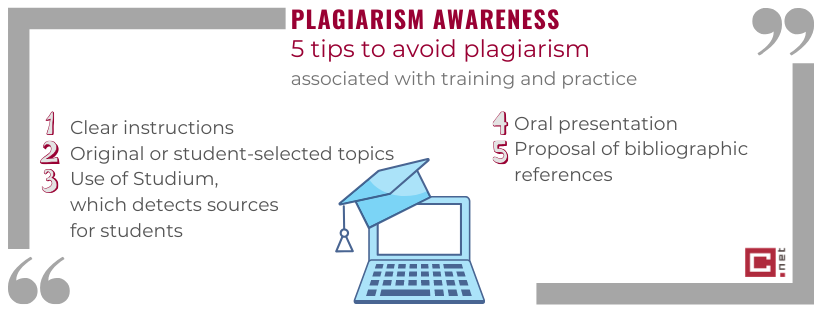
The student is a data consumer and can be overwhelmed by the amount of information found. Training can allow students to become responsible users of data. They will know the causes and consequences of non-compliance with copyrights. The workshops allow them to master the best practices for documentary research and writing: paraphrase, bibliography, citation standards... Pedagogy is established at the same time as an atmosphere of trust between the teacher and the student. Here are some final tips to reinforce the process.
- > To begin with, when instructions are clear, the risk of infringement decreases. In the assignment prompt, the teacher can remind students that plagiarism is not allowed for the requested assignment. With the guidelines clearly established, the student has been warned. The teacher can also request a complete bibliography with verified sources.
- > To avoid the temptation to copy and paste, it is important for assignment topics to be original. Several options for topics can be offered in order to increase a student's interest in the topic they cover.
- > Further, students have the option of using the Compilatio Studium software to check their written work (sponsorship made possible through your institution's Compilatio subscription). They can thus see for themselves if they have correctly cited all their sources and create an appropriate bibliography. This self-check before submitting their work will help them better understand the importance of citing sources.
- > An oral presentation of an assignment demonstrates what knowledge the student has acquired. Another option is for the teacher and the entire class to ask questions of the student who is submitting their assignment. The goal is to verify learning of the material.
- > Finally, teachers can offer bibliographic references to their students to guide their documentary research. Because the ultimate goal is to have grades focus on solving a problem rather than just the outcome. Another potential solution is for teachers to indicate where to search and to suggest appropriate sources.
In conclusion, it turns out that pedagogy remains the best means for combating plagiarism. Whether it be intentional or accidental or due to a lack of knowledge, plagiarism can cost the learner dearly. Whether or not faced with a case of plagiarism, we encourage teachers to raise students’ awareness of copyrights. Regular training, daily practice and a desire for academic integrity as the basis for the educational institution's policy are sufficient to prepare students to become responsible adults.
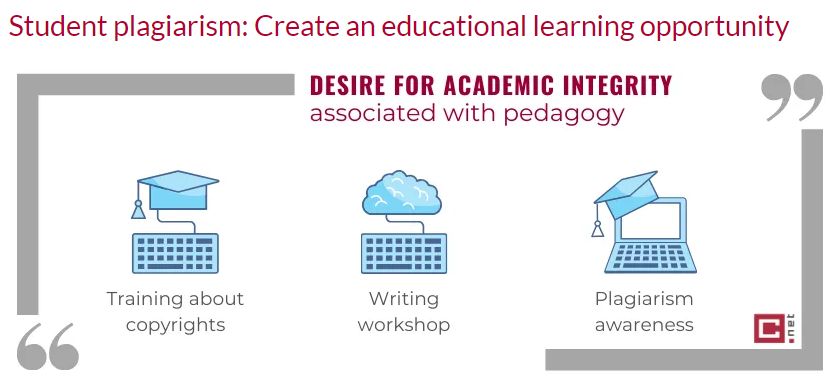
Sources used:
Brigitte Simonnot, “University plagiarism, only a question of ethics?”, Communication questions [Online], 26 | 2014, posted on December 31, 2014, accessed November 27, 2019.
Dora Dussurgey, “How to combat plagiarism at school?", Savoirs CDI, Canopée Network [Online], posted in June 2012, accessed November 17, 2019.


